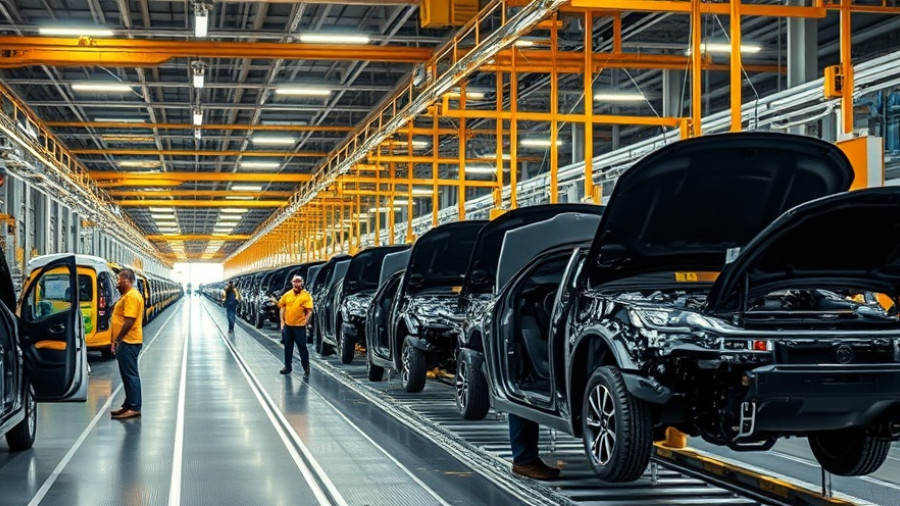
Rivian Faces Cost-Cutting Measures Amidst Market Challenges
As the electric vehicle (EV) market cools, Rivian Automotive Inc. is bracing for a storm of financial turbulence with plans to lay off over 600 employees, roughly 4.5% of its workforce. This decision, announced amid reports of declining sales, comes less than a month after a smaller round of layoffs, underscoring the urgency and severity of the current market conditions.
Understanding the EV Market Slowdown
The electric vehicle market is witnessing a distinct slowdown, a trend that has awakened industry leaders, including Rivian, to recalibrate their strategies. Factors such as the expiration of federal tax credits worth $7,500, which had previously incentivized consumers, significantly impact sales. Analysts predict that these changes will further strain companies already grappling with high manufacturing costs and intensified competition from both traditional automakers and established EV giants like Tesla.
The Impact of Competition on Rivian's Strategy
Rivian’s R1T and R1S vehicles have generated excitement and consumer interest, but the financial realities of production far outweigh enthusiasm. With Tesla continuously refining its pricing strategies, along with traditional manufacturers focusing on plug-in hybrids, Rivian's competitive edge is under scrutiny. Industry analysts emphasize that companies still reliant solely on electric vehicle sales are at a greater risk as demand fluctuates.
Looking Ahead: The R2 Model
Rivian is not merely downsizing; it is strategically positioning itself for a comeback with the anticipated launch of its R2 model, expected by 2026. Priced around $45,000, the R2 aims to tap into a broader consumer market. If successful, the R2 could shift demand dynamics, allowing Rivian to stabilize finances by reaching out to a price-sensitive customer base.
Navigating Market Challenges
Market conditions are less forgiving now, with shifting consumer expectations centering on affordability, financial flexibility, and reliable charging infrastructure for electric vehicles. Rivian's decisions, such as the recent layoffs, reflect a necessary realignment of its operational expenditures and strategic focus. CEO RJ Scaringe stated that “these are not changes made lightly,” reflecting the tough landscape.
A Knack for Adaptability
The automotive industry is notorious for its volatility, and Rivian’s ability to pivot is vital for its survival. As the company works to streamline operations at its Normal, Illinois manufacturing plant, it stands to benefit from a more efficient cost structure. By consolidating its service, sales, and marketing operations, Rivian is preparing to endure through the challenges while keeping an eye on future growth.
Consumer Sentiment: What’s at Stake?
The layoffs signal more than just a restructuring; they hint at underlying consumer sentiment that could affect purchases of both Rivian’s existing models and those planned for the future. Enthusiasts are eager to see Rivian's next moves, but potential buyers are likely re-evaluating their choices amid the absence of tax incentives.
Conclusion: Bridging the Gap as Rivian Restructures
As Rivian grapples with market realities, the layoffs are a clear indication of the tough choices ahead. The R2 model may herald a new chapter, but the real test lies in the company’s current execution strategy and ability to maintain its footprint in a rapidly changing landscape. For Rivian, preserving cash and ensuring that operations align with market demand will dictate not just survival, but potential prosperity in the years to come.
 Add Row
Add Row  Add
Add 




Write A Comment